“DOWN MEMORY LANE” – by Des Kelly
Sent to me via Max Gerreyn and an Editor who has not disclosed his/her name, for reasons unknown, and yet this is a most interesting piece of work on what was once Ceylon’s Colonial era, bringing back many precious memories especially for those like me, who, very reluctantly, had to leave our motherland to migrate to various Countries.
Because this is a fairly long article, I will end this particular introduction, leaving you, the readers to enjoy this fascinating story, wherever you are.

Desmond Kelly.
(Editor-in-Chief eLanka)
Colonial Sri Lanka: Uncovering Ceylon’s Colombo capital
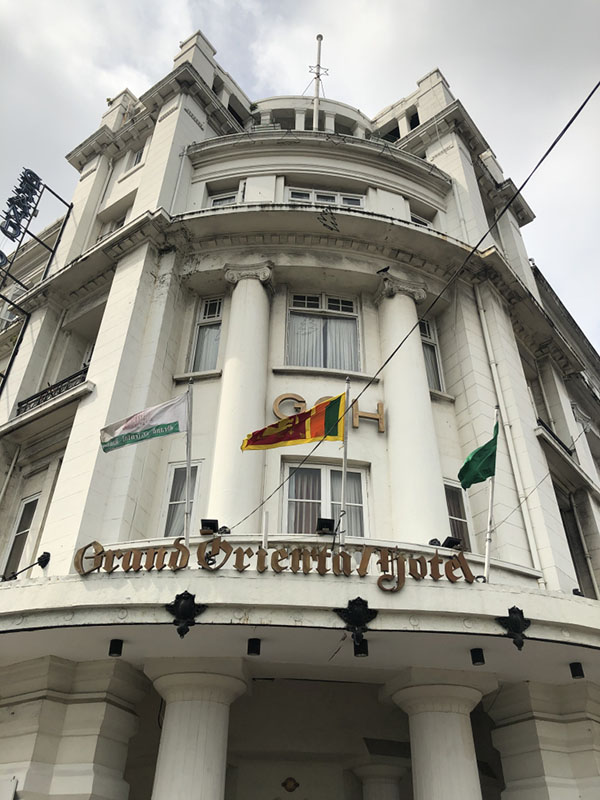
Source:Past In the present
When travellers arrived by ocean liner in Colombo they didn’t have very far to go to find a pleasant place to stay. Opposite the city’s main port, the Grand Oriental Hotel was advertised in the 19th century as “the best equipped hotel in the East” with the “best modern system of drainage” and “hot an cold water to bed and bath rooms”. It was the place to be seen in Colombo and guests needed to dress accordingly.
Built in 1837 as an army barracks, it was opened as a lavish hotel in 1875 and was so exclusive that prospective guests needed to have their stay approved through a written application to the manager. It attracted a a number of famous guests, including Anton Chekhov, the Russian playwright and author, who is is said to have written his short story Gusev during his stay in 1890.
The Grand Oriental, with its imposing white-painted colonial facade, survives, but it stands as a faded splendour. While numerous luxury modern hotels have sprung up in the Fort area of Sri Lanka’s capital, this government-owned building has seen better days. Of the more than 150 bedrooms, today only around 80 are reportedly used – the others have been turned over to warehousing – and I’ve seen rooms advertised for less than £40 per night.
In the Harbour Room on the fourth floor even the scale model of the hotel is crumbling, but its worth the trek as you enjoy superb views across the bustling port of Colombo. Colombo is the 25th busiest port in the world and is visited by cargo ships and luxury cruise liners.
European settlement
The Portuguese were the first Europeans to land, in the 16th century, in what is today Sri Lanka and agreed a trading agreement which gave them entry into the lucrative spice trade. But they had greater ambitions and went on to conquer the island’s west and east coasts. Kandy, in the central hill country and one of three original kingdoms, resisted being taken over however and remained independent until being taken by Britain in 1815.
To strengthen their hold on the island, the Portuguese built a fort in Colombo in 1518. The walls of this structure have long gone, but ‘Fort’ is today preserved in the name of Colombo’s commercial district.
In the 17th the Dutch also became interested in Sri Lanka and so they agreed a deal with the Kandyan kingdom to help drive the Portuguese out of costal areas. In return for preserving Kandy’s autonomy in the central highlands, the Dutch were awarded a monopoly over the spice trade. The Portuguese surrendered Colombo Fort to the Dutch in May 1656 after a bloody battle and two years later they gave up their last stronghold on the island.
The Dutch built a hospital in Fort, close to the main harbour which catered for officers and staff of the Dutch East India Company. Doctors from Amsterdam were employed. While the 17th century low-rise buildings set around two rectangular courtyards remain, they now house a splendid shopping and restaurant complex. The textile shop Barefoot is housed in what was previously a mortuary, while Taphouse was used as the dispensary. Its now a lively spot with bands performing outside bars and artists displaying their wares at street-side stalls.
But the Dutch’s 140-year rule came to an end in 1796 after the Netherlands fell to France. The Dutch East India Company granted Sri Lanka to the British for protection, however seeing its strategic value Britain made it a colony (Ceylon) in 1805. It then conquered the Kandyan kingdom 1815, giving it full control of the island and in the same year Colombo was made the official capital. By the 1860s Colombo was considered the country’s main port, which brought enormous benefits to the Fort area given its location.
Commercial district
Fort is today the commercial heart of Colombo, with government offices, banks, other corporations and luxury hotels. Since 1997 the skyline has been dominated by the twin glass-fronted towers of the World Trade Center, housing offices, restaurants and upmarket retail outlets.
But alongside the modern architecture, there are plenty of surviving colonial-era buildings. One block from the Grand Oriental on York Street is the distinctive red-and-white Cargills building. Opened in 1906, it was claimed to be Asia’s first department store, offering colonials luxury goods ranging from motorbikes to caviar. Original signs hang above the covered walkway – which kept customers dry during monsoons and shaded in the hot sun – and provide reminders of what used to be sold here: “Dispensing, drugs, toilet requisites, perfumery, optical goods,” reads one.
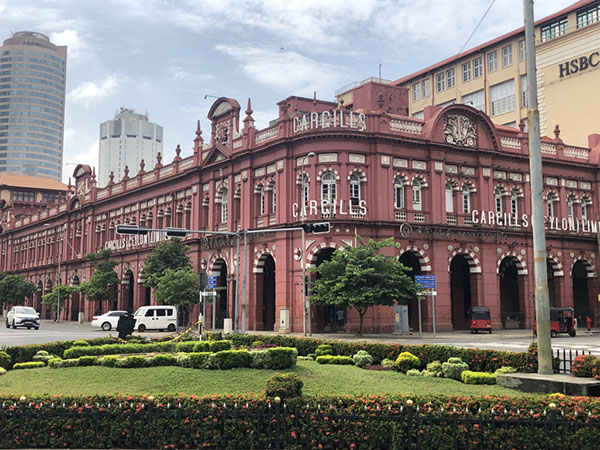
Cargills
Sadly the building no longer houses a well-stocked department store. It remains the headquarters of Cargills (Ceylon) PLC, but the business’s focus is now on retail, banking and restaurants. The ground floor of the York Street building seems quite surreal because in one corner there’s a small supermarket – run by the company’s Food City brand – while the rest of the open plan space has been abandoned. Next door is a KFC branch (Cargills owns the Sri Lanka franchise and is the country’s biggest restaurant operator), while another part of the building is used the Bank of China but sadly the original interiors have gone.
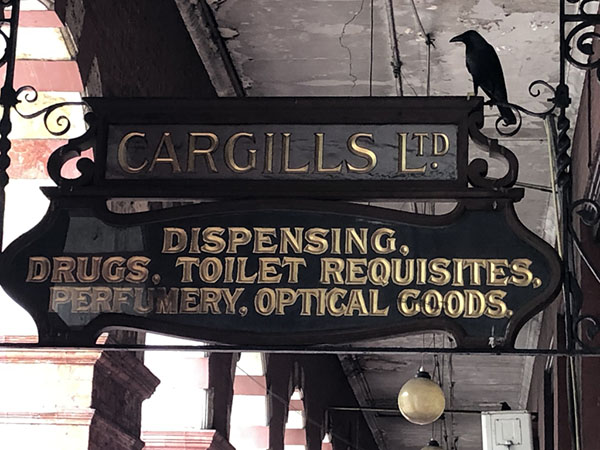
Financial institutions dominated in this part of Colombo during colonial times and many of these old buildings have been lovingly restored in recent years. The Central Bank building, now known as Central Point and dating from 1904, features the tallest chandelier Asia. The white-facaded Lloyd’s buildings have also been brought back to their former glory. And the old Hongkong Shanghai Banking Corporation limited (today HSBC) offices, which were completed in the 1920s, were renovated just a few years ago and feature the original marble steps, brass hand rail and wooden entrance doors.
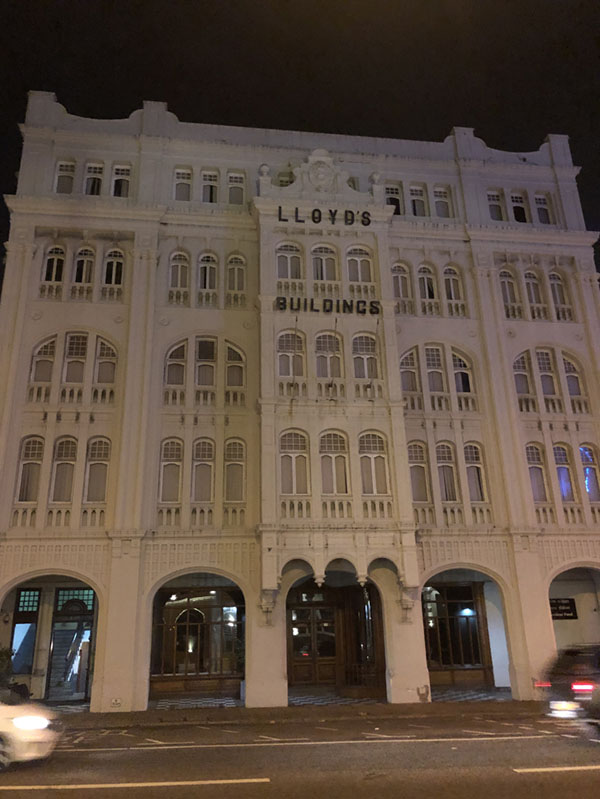
Other notable buildings here include the grey-blue neo-classical St Peter’s Church, next to the Grand Oriental, which was originally Dutch governor’s banquet hall and first used as a church in 1821. Meanwhile, the city’s first post office opened (1895) is currently standing empty, but there plans to open it as post office again, as well as housing a post office museum and offices. For now you can take a peak through the shutters to see the original ornate wooden counters.
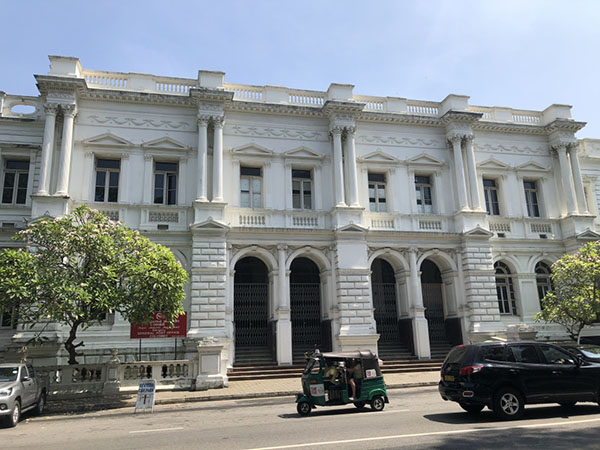
Fort post office building
War and re-construction
Fort suffered badly during the country’s 25-year civil war, which ended in 2009 and left 100,000 people dead. In 1996 the Central Bank building on Janadhipathi Mawatha was destroyed.
With peace, Fort has become a building site as old buildings are renovated and new modern structures erected. One of the first restoration projects was the Dutch Hospital, which like many other schemes in the city was carried out by the military. As you walk around Fort you’ll notice blocks that are used as military barracks, the bunk beds just visible through the windows and soldiers’ laundry hanging on the open shutters of upper floors.
It was during the civil war years that the Grand Oriental Hotel fell into decline as guests got fed up with the endless checkpoints in this part of the city. And visitors never returned. But given the wave of investment and new luxury hotels opening in Fort (Ritz Carlton is building here), it can’t be long before this famous establishment also gets a makeover and is restored to its former glory.
In the meantime, if you want to enjoy the luxurious surroundings of a fine colonial-era hotel you couldn’t do much better than head to Galle Face Hotel, which opened in 1864 to serve the elite European gentry who were starting to discover Ceylon as a holiday destination. The hotel stands next to Galle Face Green, laid out in 1859 by Sir Henry Ward, who was governor of Ceylon from 1855 to 1860, which was once used by British colonials for horse racing and was a popular place for riding in a carriage. Today, Sri Lankans gather here to buy food from the line of stalls along promenade overlooking the Indian Ocean.
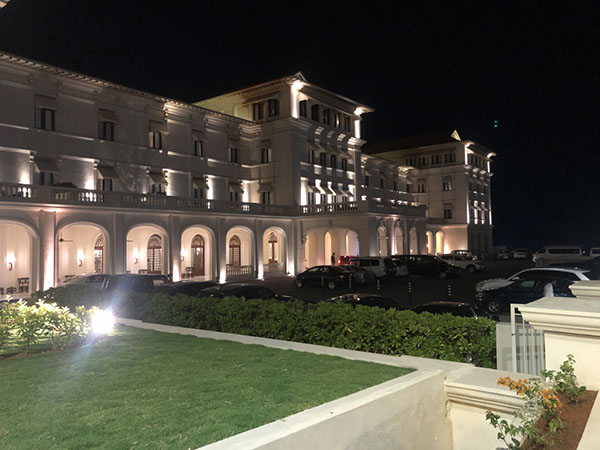
Galle Face Hotel
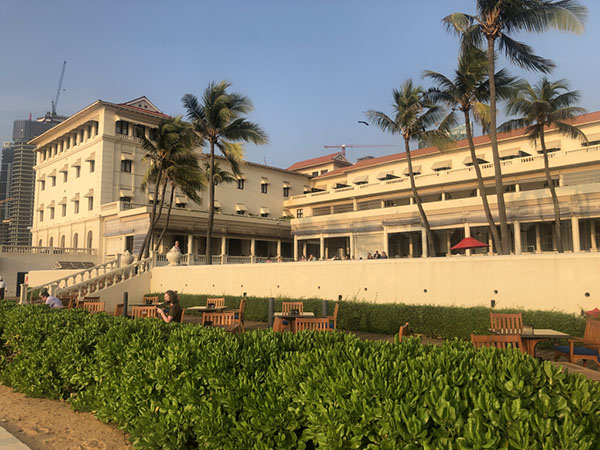
Terrace of the Galle Face Hotel
The Galle Face Hotel’s bedrooms and public spaces have been upgraded over the years to cater for modern travellers, but the place would still look familiar to 19th century visitors. What is now the Grand Ballroom was one of the largest dining rooms in colonial Colombo and was where the elite were entertained by an in-house band. At the buffet restaurant, The Veranda, where barefoot waiters weaved there way through the corridors wearing sarongs, diners still enjoy a magnificent view of the Indian Ocean. The pool bar, surrounded by well-kept lawns, palm trees and overlooking the sea is the perfect place to enjoy a chilling drink as the sun sets over Colombo.
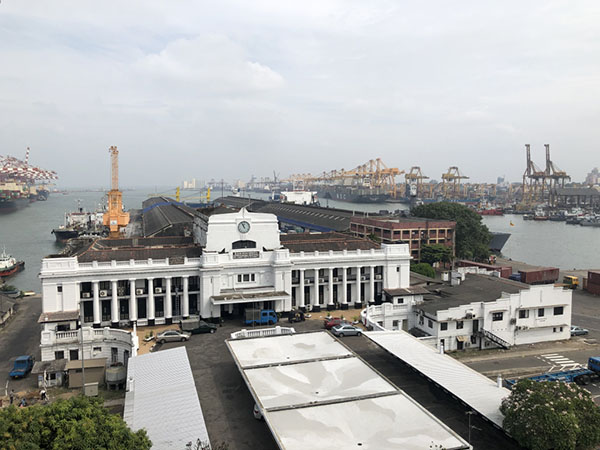
View from the Grand Oriental Hotel
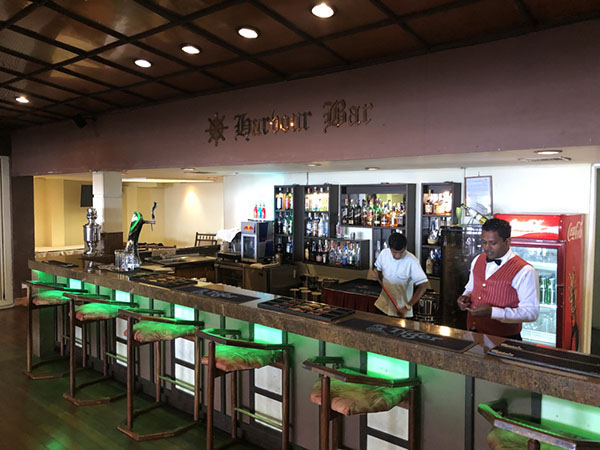
Harbour Bar at the Grand Oriental Hotel
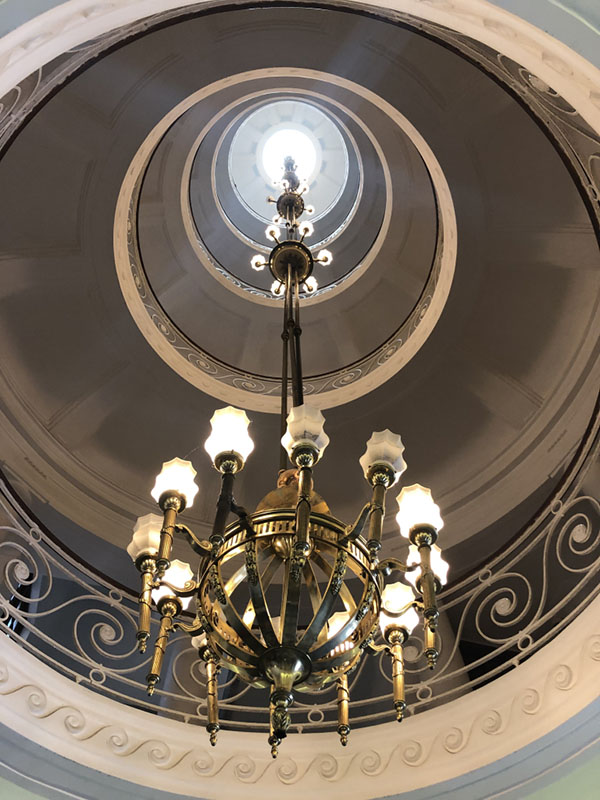
Inside the former Central Bank building (1904) – featuring the tallest chandelier Asia








No Comments